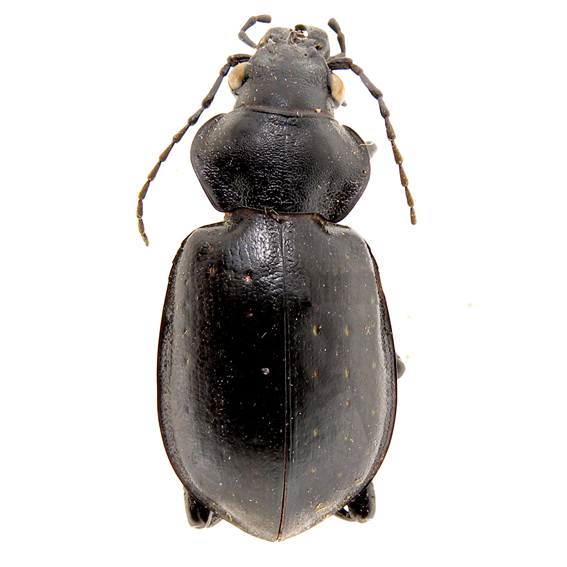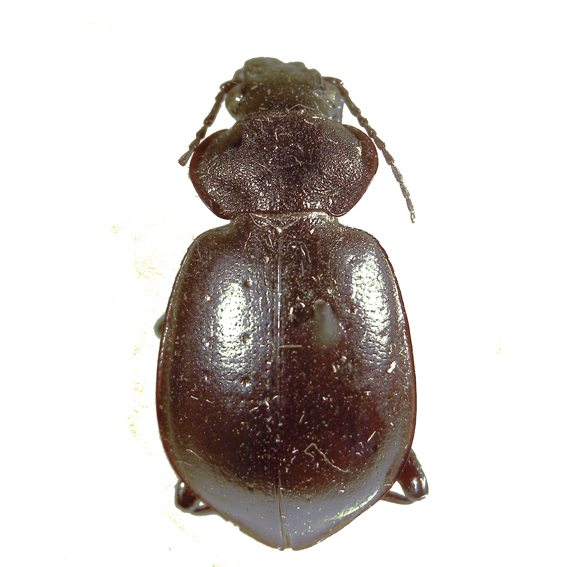Calosoma (Chrysostigma) morrisonii Horn, 1885
Calosoma Morrisonii Horn, 1885: 18 (type locality: Colorado); syntype ♂ in Museum of Comparative Zoology, Harvard University, Cambridge, Ma. (https://mczbase.mcz.harvard.edu/) and syntypes ♂ ♀ in Naturalis Biodiversity Centre, Leiden (de Boer, 2002: 79)
Calosoma (Chrysostigma) morrisoni Breuning, 1928: 86
Callisthenes (Chrysostigma) morrisoni Lapouge, 1931: 381
Chrysostigma Morrisoni Jeannel 1940:165
Calosoma (Chrysostigma) morrisoni Gidaspow, 1959: 270
Callisthenes (Chrysostigma) morrisonii Erwin, 2007: 79
Length 18-25 mm. C. morrisonii has the pronotum narrowed at the base with small rear lobes. The elytra in both sexes are short and conspicuously wide toward the apex, the sculpture is flattened, of homodynamic type, consisting in punctate striae with intervals slightly scaly, more so in the lateral parts of elytra. The foveae on the primary intervals, while small and shallow, have a copper bottom and so are clearly visible.
When dealing with C. calidum, we discussed. the systematic position of C. mexicanum which, contrary to the Breuning’s opinion, reported by all the following authors, should be attributed to C. calidum and not to C morrisonii.
C. morrisonii is certainly present, though rare, in Colorado where the type comes from. However its presence has been often indicated, but not sufficiently documented, in a larger area of the south-western United States. Burgess & Collins (1917: 106) referred that it has been found in South California and Gidaspow (1959: 270) in New Mexico as well as in northern Mexico (Durango), without further details.
Examined specimens and literature’s data
Mexico. Durango (Gidaspow 1959: 270)
United States. California: South California (Burgess & Collins, 1917: 106), California (MCZ); Colorado: Denver (AC), Hesperus (AMNH), Lincoln County (http://bugguide.net/); New Mexico: (Gidaspow 1959: 270), Bottomless Lakes State Park (www.inaturalist.org)
Notes: Winged. It can be found in uplands from 1500m to 1800m altitude, on dry open ground and sand dune. Adult have been found active in April-May (Erwin, 2007: 79) and in August.
The species is named after Herbert Knowles Morrison [1854-1885] a professional insect collector that travelled all across the United States in order to enrich his collection of Butterflies. The name of the species, sometimes erroneously cited as C. morrisoni, is instead valid and properly formed using the genitive of the latinized name of person to which it is dedicated.
 United States: Colorado, Denver, 2.V.1949 (coll. A. Casale) |
 United States: Colorado, Hesperus 8100 ft., 5.VI.39, Rotger (coll. American Museum of Natural History, New York) |